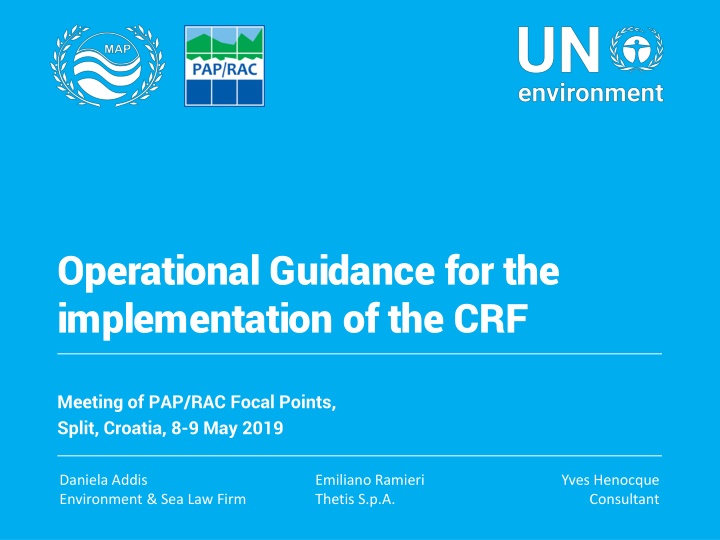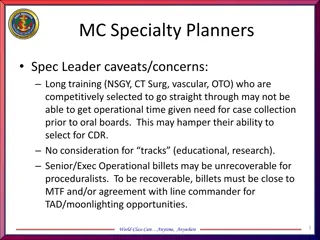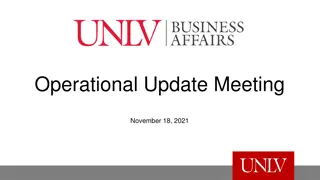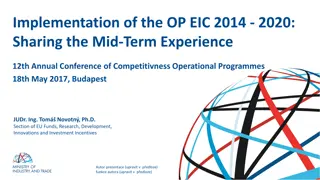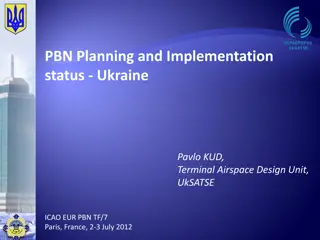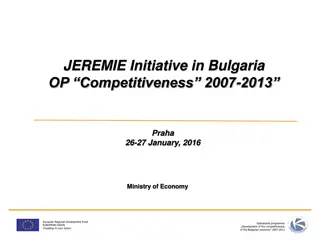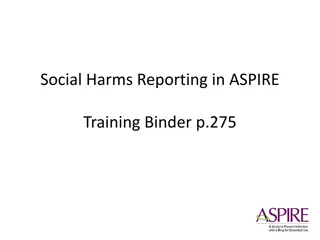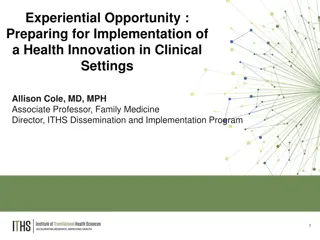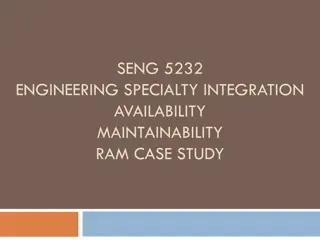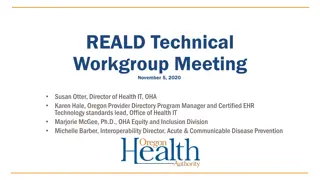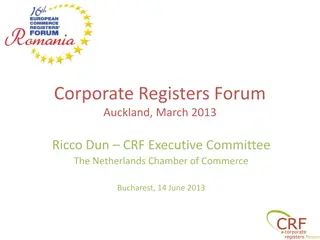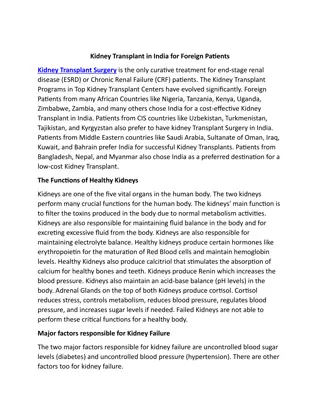Operational Guidance for CRF Meeting Implementation
This guidance aims to support the implementation of the ICZM Protocol at regional and sub-regional levels within the CRF for achieving EcAp EOs. It involves utilizing an interactive IT platform and a matrix of interactions to facilitate decision-making mechanisms. The phased approach includes analysis of key documents and interactions to ensure coordination and integration with the UNEP/MAP-Barcelona Convention System.
Download Presentation

Please find below an Image/Link to download the presentation.
The content on the website is provided AS IS for your information and personal use only. It may not be sold, licensed, or shared on other websites without obtaining consent from the author.If you encounter any issues during the download, it is possible that the publisher has removed the file from their server.
You are allowed to download the files provided on this website for personal or commercial use, subject to the condition that they are used lawfully. All files are the property of their respective owners.
The content on the website is provided AS IS for your information and personal use only. It may not be sold, licensed, or shared on other websites without obtaining consent from the author.
E N D
Presentation Transcript
Operational Guidance for the implementation of the CRF Meeting of PAP/RAC Focal Points, Split, Croatia, 8-9 May 2019 Daniela Addis Environment & Sea Law Firm Emiliano Ramieri Thetis S.p.A. Yves Henocque Consultant
CRF methodological guidance The present methodological guidance aims to support the implementation of the ICZM Protocol at regional and sub-regional levels (with possible replication at lower scale), within the CRF, towards the achievement of EcAp EOs, in a coordinated and integrated manner with the UNEP/MAP-Barcelona Convention System, and in light with the relevant international instruments.
Phases of the methodological guidance A specific interactive IT platform should be functional designed and therefore set up as an operational tool to support the implementation of the process, using existing mechanisms. 3
PHASE A - Matrix of interactions The matrix of interactions is developed and should be directly utilized as an assessment tool supporting decision-making mechanisms at the different levels (regional, sub-regional, national, sub-national): the identification of the spatial and temporal (short, medium and long-term) scales is therefore an essential initial step of the overall analysis (from Phase A to Phase C), including the elaboration of the matrix of interactions. 4
PHASE A - Matrix of interactions Matrix refers to the regional scale of analysis. Dynamic instrument, whose values depend on the scale, temporal dimension specific characteristics of the area of analysis. Different tools can be used to support the matrix updating (e.g. MEDPOL based on DPSIR approach). and 5
Phase B Analysis of provisions of main documents The initial part of Phase B: identification of the most relevant interactions between EcAp EOs and elements of the ICZM Protocol, based on the analysis performed in Phase A. Different approaches and methods can be applied to identify such interactions, which also depends on the specific scale of analysis (regional, sub-regional, national, sub-national). The second part of Phase B provides a detailed analysis of the provisions of the main relevant documents part of the UNEP/MAP-Barcelona Convention System related to key interactions between EcAp EOs and the elements of the ICZM Protocol previously identified. 6
Phase B Analysis of provisions of main documents Main goals: (i) Provide a coherent implementation of ICZM in the Mediterranean and the related policy documents of the UNEP/MAP-Barcelona Convention, in light of EcAp EOs; (ii) Provide a sort of manual to be consulted by users according to their specific focus. 7
Phase C - Identification of operational recommendations Phase C aims at identifying a set of operational recommendations which shall be calibrated in relation with the geographical coverage and the time at stake, as well as cumulative impact integration rules, regularly updated. Operational recommendations are strictly dependent on the spatial and temporal scale of analysis, to be identified at the beginning of the methodological process. 8
Phase C - Identification of operational recommendations Recommendations should be: Focused on the elements of the ICZM Protocol which show most relevant interactions with the EcAp EOs (priority interactions), according to the previous phases and for which policy documents are analysed in Phase B. Developed in relation with the first two main objectives of the CRF on ICZM (Coastal zone integrity; Natural hazards) provided the 3rd one (governance) is cross-cutting the two others. It is recommended to cluster elements (activities and natural and cultural elements), e.g. for coastal and maritime activities and natural and cultural elements considered by the ICZM Protocol. 9
Step-wise process towards development of the operational recommendations 10
Template for the identification of operational recommendations 11
Thank you Avv. Daniela Addis Environment&Sea Law Firm Piazza Dell Oro 3 00186 Rome IT Tel. +39 333 500 3493 daniela.addis@gmail.com daniela.addis@me.com ..
